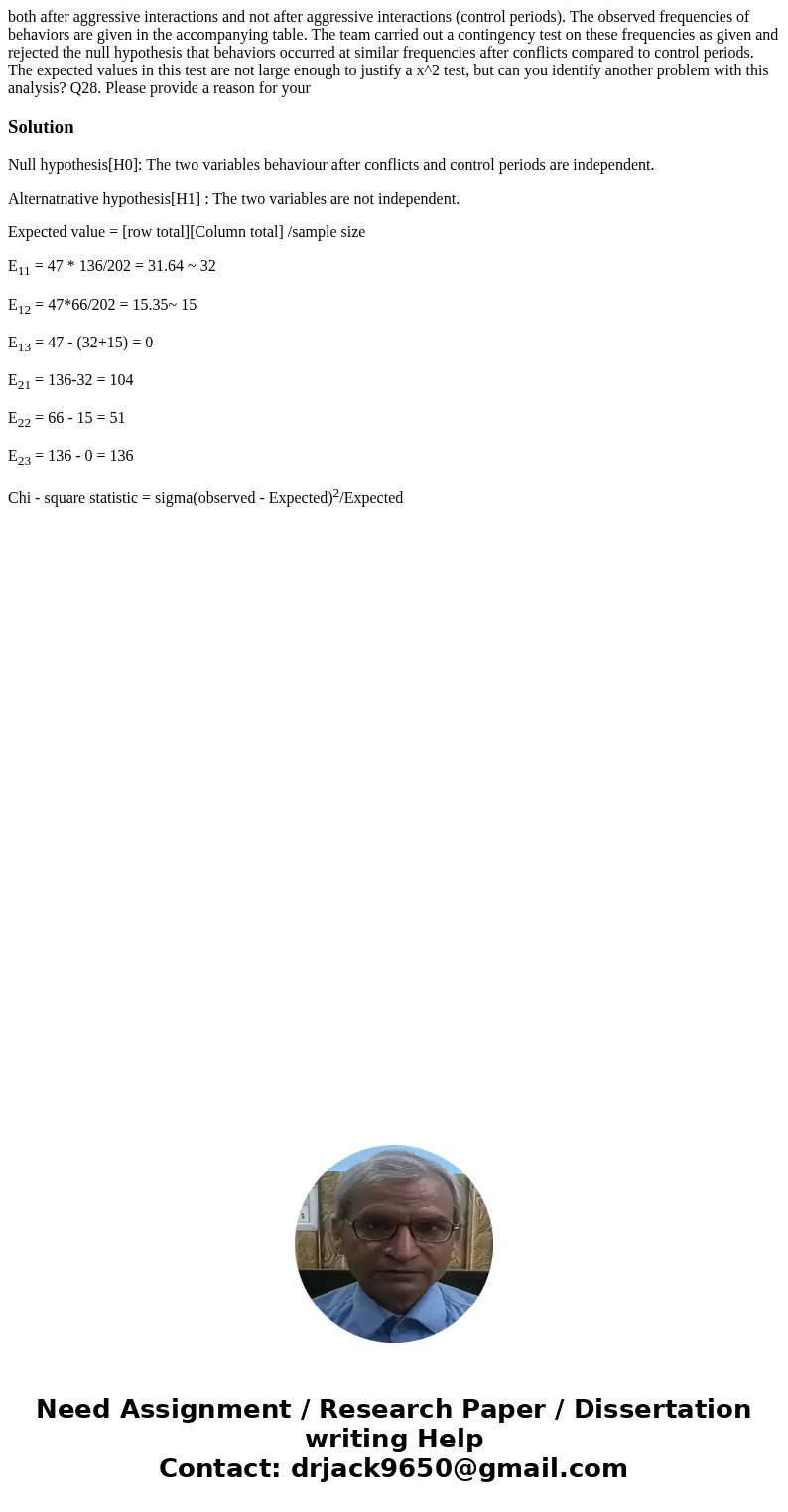both after aggressive interactions and not after aggressive
both after aggressive interactions and not after aggressive interactions (control periods). The observed frequencies of behaviors are given in the accompanying table. The team carried out a contingency test on these frequencies as given and rejected the null hypothesis that behaviors occurred at similar frequencies after conflicts compared to control periods. The expected values in this test are not large enough to justify a x^2 test, but can you identify another problem with this analysis? Q28. Please provide a reason for your 
Solution
Null hypothesis[H0]: The two variables behaviour after conflicts and control periods are independent.
Alternatnative hypothesis[H1] : The two variables are not independent.
Expected value = [row total][Column total] /sample size
E11 = 47 * 136/202 = 31.64 ~ 32
E12 = 47*66/202 = 15.35~ 15
E13 = 47 - (32+15) = 0
E21 = 136-32 = 104
E22 = 66 - 15 = 51
E23 = 136 - 0 = 136
Chi - square statistic = sigma(observed - Expected)2/Expected

 Homework Sourse
Homework Sourse